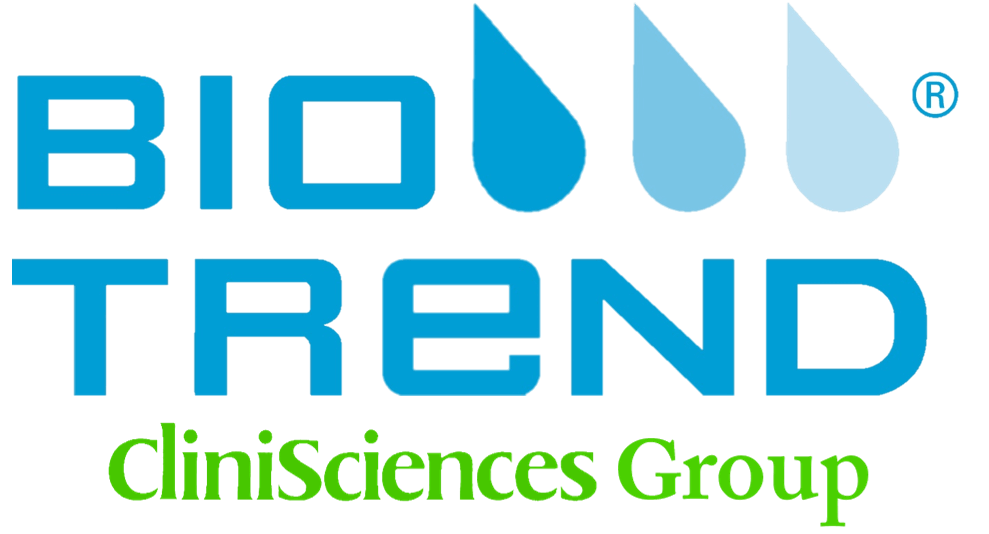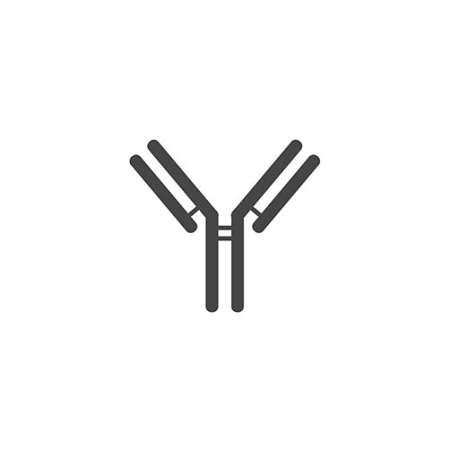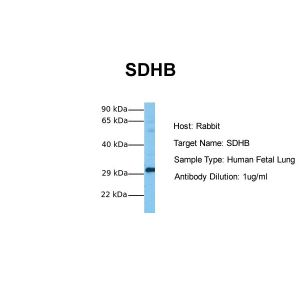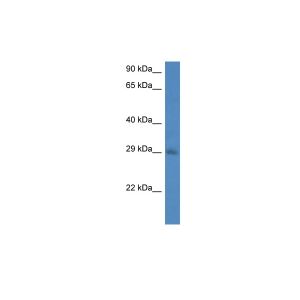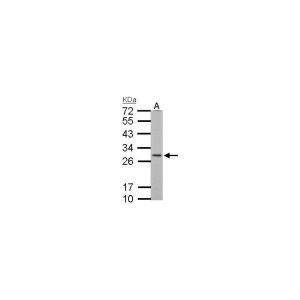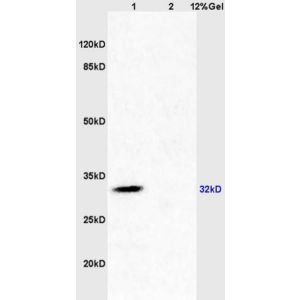SDHB Antibody - middle region : Biotin
Katalog-Nummer ARP47981_P050-Biotin
Size : 100ul
Marke : Aviva Systems Biology
| Datasheets/Manuals | Printable datasheet for anti-SDHB (ARP47981_P050-Biotin) antibody |
|---|
| Publications | Qattan, A. T., Radulovic, M., Crawford, M. & Godovac-Zimmermann, J. Spatial distribution of cellular function: the partitioning of proteins between mitochondria and the nucleus in MCF7 breast cancer cells. J. Proteome Res. 11, 6080-101 (2012). WB, Dog, Horse, Rat, Guinea pig, Goat, Bovine, Human, Rabbit, Mouse, Zebrafish, Yeast 23051583 |
|---|---|
| Predicted Species Reactivity | Human, Mouse, Rat, Cow, Dog, Goat, Guinea Pig, Horse, Rabbit, Yeast, Zebrafish |
| Product Format | Liquid. Purified antibody supplied in 1x PBS buffer. |
| Clonality | Polyclonal |
| Host | Rabbit |
| Conjugation | Biotin |
| Application | WB |
| Reconstitution and Storage | All conjugated antibodies should be stored in light-protected vials or covered with a light protecting material (i.e. aluminum foil). Conjugated antibodies are stable for at least 12 months at 4C. If longer storage is desired (24 months), conjugates may be diluted with up to 50% glycerol and stored at -20C to -80C. Freezing and thawing conjugated antibodies will compromise enzyme activity as well as antibody binding. |
| Immunogen | The immunogen is a synthetic peptide directed towards the middle region of human SDHB |
| Purification | Affinity Purified |
| Predicted Homology Based on Immunogen Sequence | Cow: 100%; Dog: 100%; Goat: 100%; Guinea Pig: 100%; Horse: 100%; Human: 100%; Mouse: 100%; Rabbit: 100%; Rat: 100%; Yeast: 79%; Zebrafish: 86% |
| Peptide Sequence | Synthetic peptide located within the following region: YRWMIDSRDDFTEERLAKLQDPFSLYRCHTIMNCTRTCPKGLNPGKAIAE |
| Concentration | 0.5 mg/ml |
| Blocking Peptide | For anti-SDHB (ARP47981_P050-Biotin) antibody is Catalog # AAP47981 (Previous Catalog # AAPS20009) |
| Sample Type Confirmation | SDHB is supported by BioGPS gene expression data to be expressed in Jurkat |
| Subunit | mitochondrial |
| Reference | Cascon,A., (2008) J. Med. Genet. 45 (4), 233-238 |
|---|---|
| Gene Symbol | SDHB |
| Gene Full Name | Succinate dehydrogenase complex, subunit B, iron sulfur (Ip) |
| Alias Symbols | IP, SDH, CWS2, PGL4, SDH1, SDH2, SDHIP, MC2DN4 |
| NCBI Gene Id | 6390 |
| Protein Name | Succinate dehydrogenase [ubiquinone] iron-sulfur subunit, mitochondrial |
| Description of Target | Complex II of the respiratory chain, which is specifically involved in the oxidation of succinate, carries electrons from FADH to CoQ. The complex is composed of four nuclear-encoded subunits and is localized in the mitochondrial inner membrane. The iron-sulfur subunit is highly conserved and contains three cysteine-rich clusters which may comprise the iron-sulfur centers of the enzyme. Sporadic and familial mutations in this gene result in paragangliomas and pheochromocytoma, and support a link between mitochondrial dysfunction and tumorigenesis.Complex II of the respiratory chain, which is specifically involved in the oxidation of succinate, carries electrons from FADH to CoQ. The complex is composed of four nuclear-encoded subunits and is localized in the mitochondrial inner membrane. The iron-sulfur subunit is highly conserved and contains three cysteine-rich clusters which may comprise the iron-sulfur centers of the enzyme. Sporadic and familial mutations in this gene result in paragangliomas and pheochromocytoma, and support a link between mitochondrial dysfunction and tumorigenesis. Publication Note: This RefSeq record includes a subset of the publications that are available for this gene. Please see the Entrez Gene record to access additional publications. |
| Uniprot ID | P21912 |
| Protein Accession # | NP_002991 |
| Nucleotide Accession # | NM_003000 |
| Protein Size (# AA) | 280 |
| Molecular Weight | 31kDa |
| Protein Interactions | UBC; XRN1; ITGA4; TP53BP1; HNRNPUL2; PIGS; TIMM50; MRPL45; SLC25A22; MRPL40; MRPS5; IWS1; MRPS10; MRPL20; OCIAD1; TOMM7; NDUFB11; LAMTOR2; TMED2; TOMM40; RBM14; IQGAP1; UQCRFS1; SSBP1; SDHA; OXA1L; NDUFV2; NDUFS1; NDUFB9; NDUFB6; NDUFA10; NDUFA9; GSN; ATP |
